20 Years Ago: Bad News from Earth
All Americans above a certain age remember where they were and what they were doing when they heard the news on Sept. 11, 2001. One American, NASA astronaut Frank L. Culbertson, remembers it vividly as the only American off the planet on that tragic day. He and his two Expedition 3 crewmates, cosmonauts Vladimir N. Dezhurov and Mikhail V. Tyurin representing Roscosmos, had been aboard the International Space Station for a month when they witnessed the attacks from their unique vantage point.
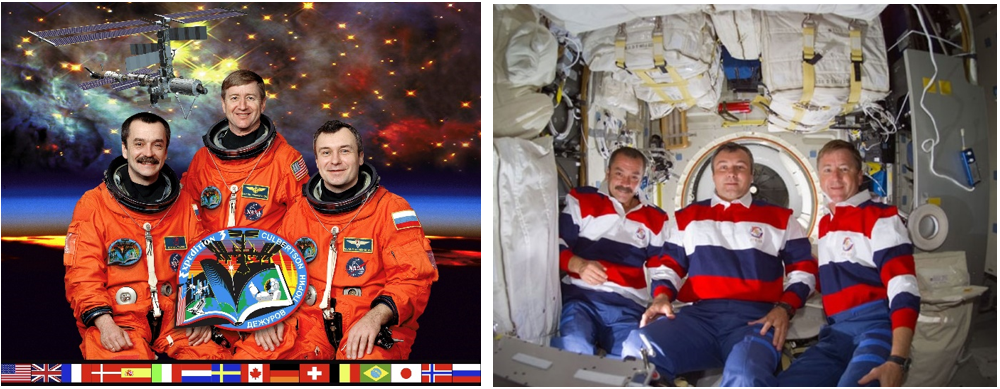
Left: The official photo of the Expedition 3 crew of Mikhail V. Tyurin, left, Frank L. Culbertson, and Vladimir N. Dezhurov. Right: Tyurin, left, Dezhurov, and Culbertson aboard Space Shuttle Discovery, eager to board the space station. Credits: NASA
The Space Shuttle Discovery on the STS-105 mission delivered Culbertson, Dezhurov, and Tyurin to the space station on Aug. 12, 2001. During their first month aboard the station after the shuttle’s departure, they settled into their routine of maintaining the orbiting facility, conducting a variety of scientific experiments, getting daily exercise, and even enjoying a little leisure time. On Aug. 22, Culbertson, Dezhurov, and Tyurin monitored the departure of one Progress cargo vehicle filled with trash and unneeded equipment and, the next day, welcomed another Progress resupply craft, unloading the 3,000 pounds of supplies delivered to them. They were preparing for the Sept. 16 arrival of the Russian Pirs docking compartment — the next element to be added to the space station, then still under assembly. Dezhurov and Tyurin were looking forward to a pair of spacewalks in October using that newly arrived module as an airlock.
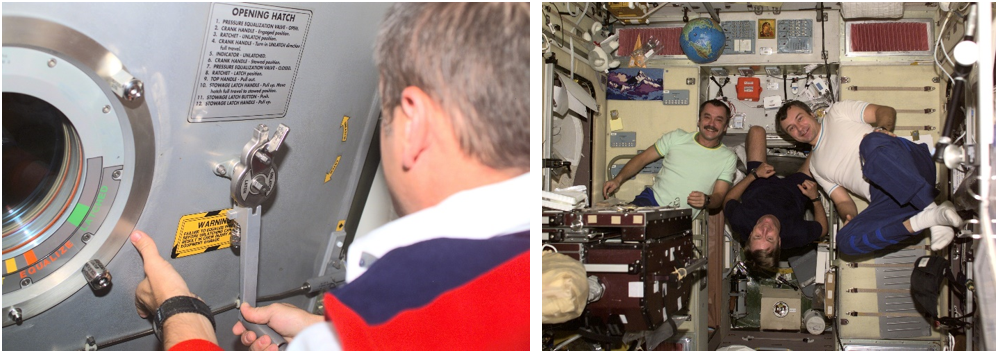
Left: Expedition 3 Commander Frank L. Culbertson closing the space station’s hatch prior to the departure of Discovery on Aug. 20, 2001. Right: Expedition 3 crew members Mikhail V. Tyurin, left, Culbertson, and Vladimir N. Dezhurov have the space station all to themselves after the departure of the space shuttle. Credits: NASA

Left: Expedition 3 Flight Engineer Vladimir N. Dezhurov prepares a meal in the Zvezda Service Module. Middle: Expedition 3 Commander Frank L. Culbertson exercises on the space station’s treadmill. Right: Expedition 3 Flight Engineer Mikhail V. Tyurin relaxes by playing the guitar in the Quest Airlock Module. Credits: NASA
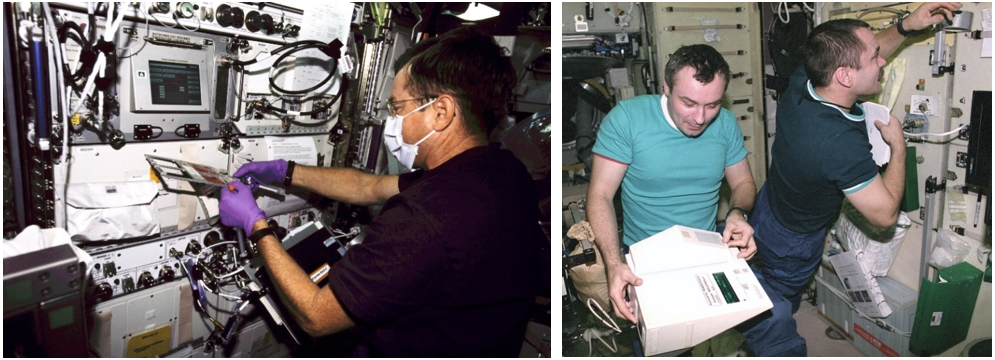
Left: Expedition 3 Commander Frank L. Culbertson performs a tissue-culture experiment in the Destiny U.S. Laboratory Module. Right: Expedition 3 cosmonauts Vladimir N. Dezhurov, left, and Mikhail V. Tyurin of Roscomos preparing to analyze blood samples for a medical experiment in the Zvezda Service Module. Credits: NASA
For the Expedition 3 crew aboard the space station, like millions of Americans back on Earth, Sept. 11 began as an ordinary day, their 33rd day in space. Following a morning of physical exams, Culbertson, who served as the crew’s medical officer, began a private medical conference with NASA Flight Surgeon Stephen F. Hart to relay to him the results of the tests.
“Frank, we’re not having a very good day down here on Earth,” Dr. Hart said, going on to explain how two commercial airliners had crashed into the twin towers of the World Trade Center in New York City and a third into the Pentagon outside Washington, D.C. As they were talking, they received word that a fourth airliner had crashed somewhere in Pennsylvania. At first stunned into disbelief by the news, Culbertson quickly realized that the space station, then over central Canada, was about to make a southeasterly pass over Maine, within viewing distance of New York. Culbertson grabbed a video camera and headed for a window facing in the proper direction. A few minutes later, he saw and videotaped a large plume of smoke stretching for dozens of miles from the lower Manhattan site of the World Trade Center.
After a few minutes, the space station moved out of range of New York, and the three crew members had 90 minutes before its orbit brought it back again over the area. They set up several still and video cameras to record the events as they were still unfolding, unknowingly witnessing the collapse of the second tower as a bloom of smoke.
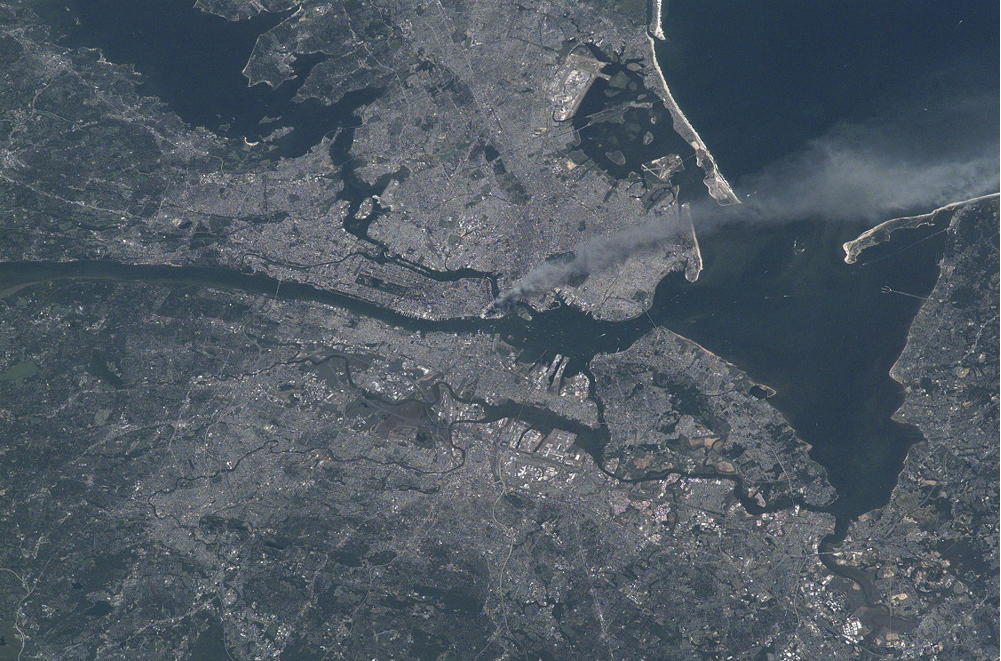
View of the greater New York City area taken by the Expedition 3 crew shows the plume of smoke from the World Trade Center site in lower Manhattan. Credits: NASA
Over the next few orbits, the space station made several more passes over the United States, and the crew members noted the gradual disappearance of the normally common jet contrails as officials halted all commercial air traffic in U.S. airspace. The following day, Culbertson learned from his crew support astronaut, Timothy J. “TJ” Creamer, that his Naval Academy classmate Charles F. “Chic” Burlingame had been the pilot aboard the hijacked airliner that crashed into the Pentagon.
Over the next few days, Culbertson sent letters to the ground, reflecting on the events of Sept. 11. He commented on his overwhelming feeling of isolation as the only American off the planet. He recognized “the terrible shift in the history of the world,” but described watching the launch of the rocket bringing the Pirs docking compartment to the space station, concluding, “Life goes on, even in space. We are here to stay.”
A few days later, his Naval Academy class held its 30-year reunion and, from aboard space station, Culbertson recorded a message and played Taps in tribute to his fallen classmate.
In 2014, Culbertson recorded a video recollection of the events of Sept. 11, 2001, for NASA’s Kennedy Space Center Visitor Complex.
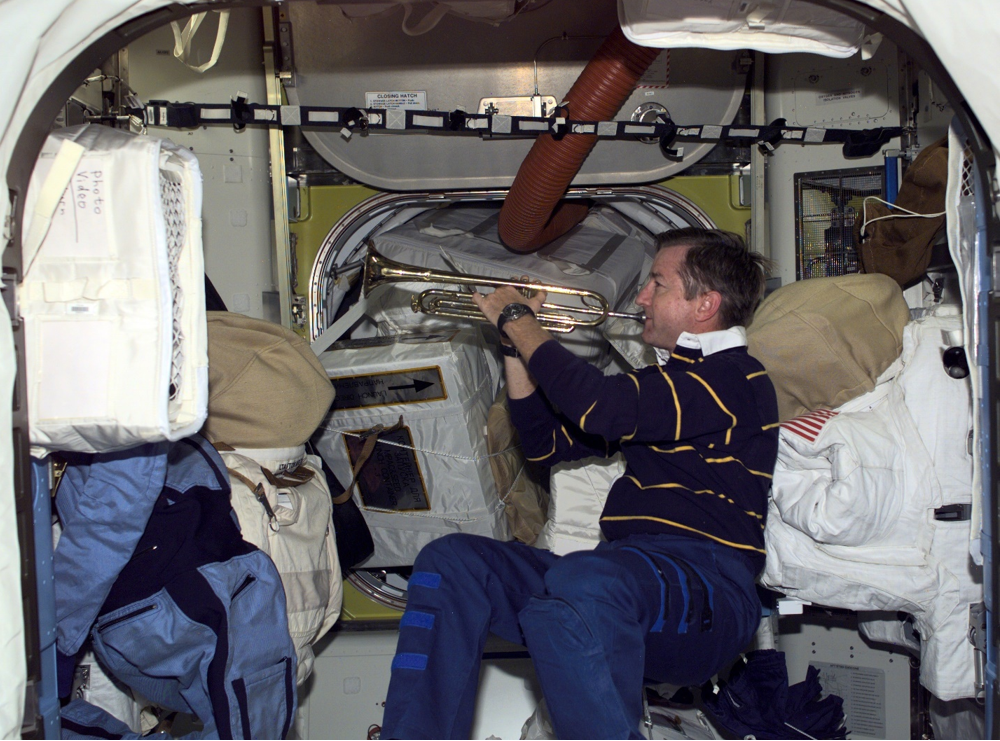
Aboard station, Expedition 3 Commander Frank L. Culbertson plays Taps in honor of his Naval Academy classmate Charles F. “Chic” Burlingame. Credits: NASA







